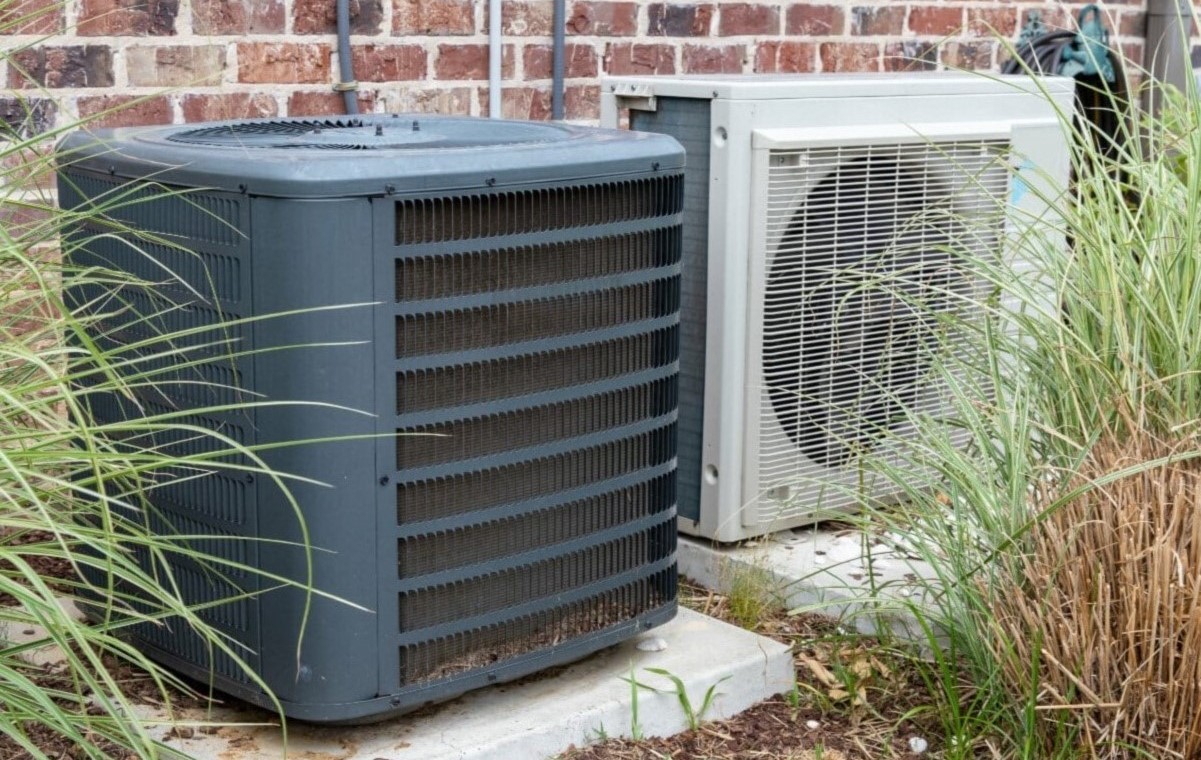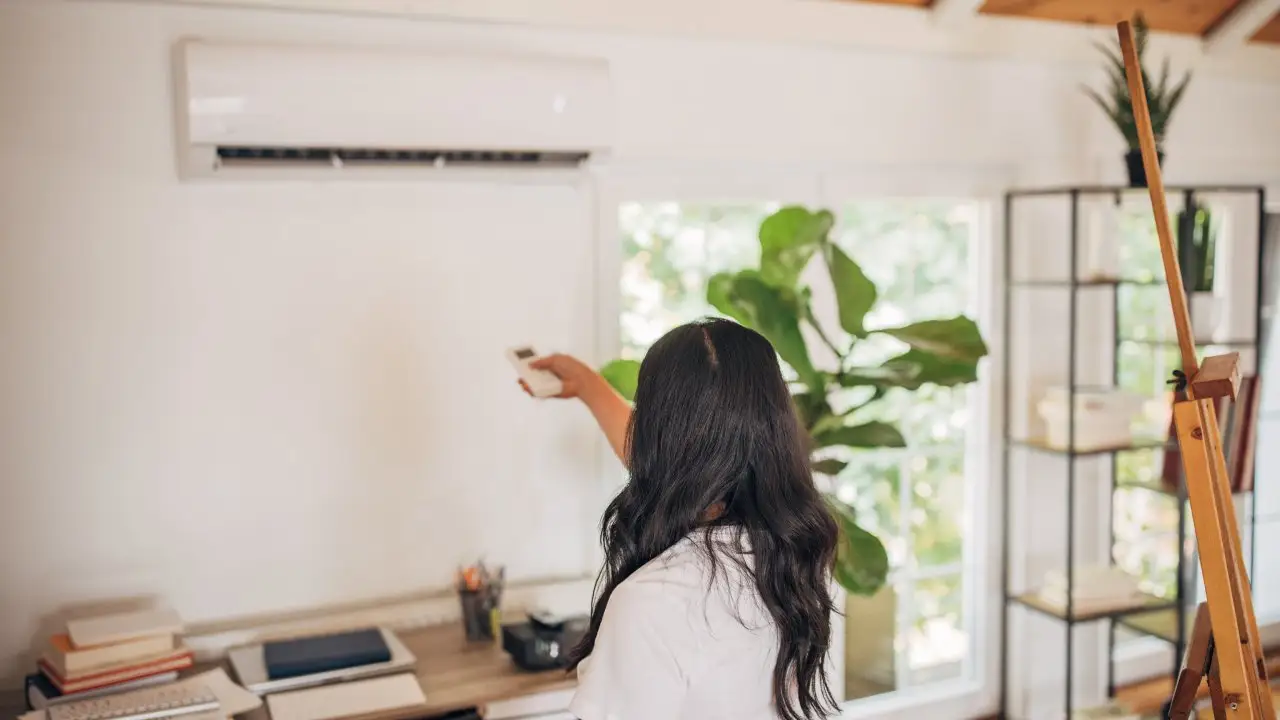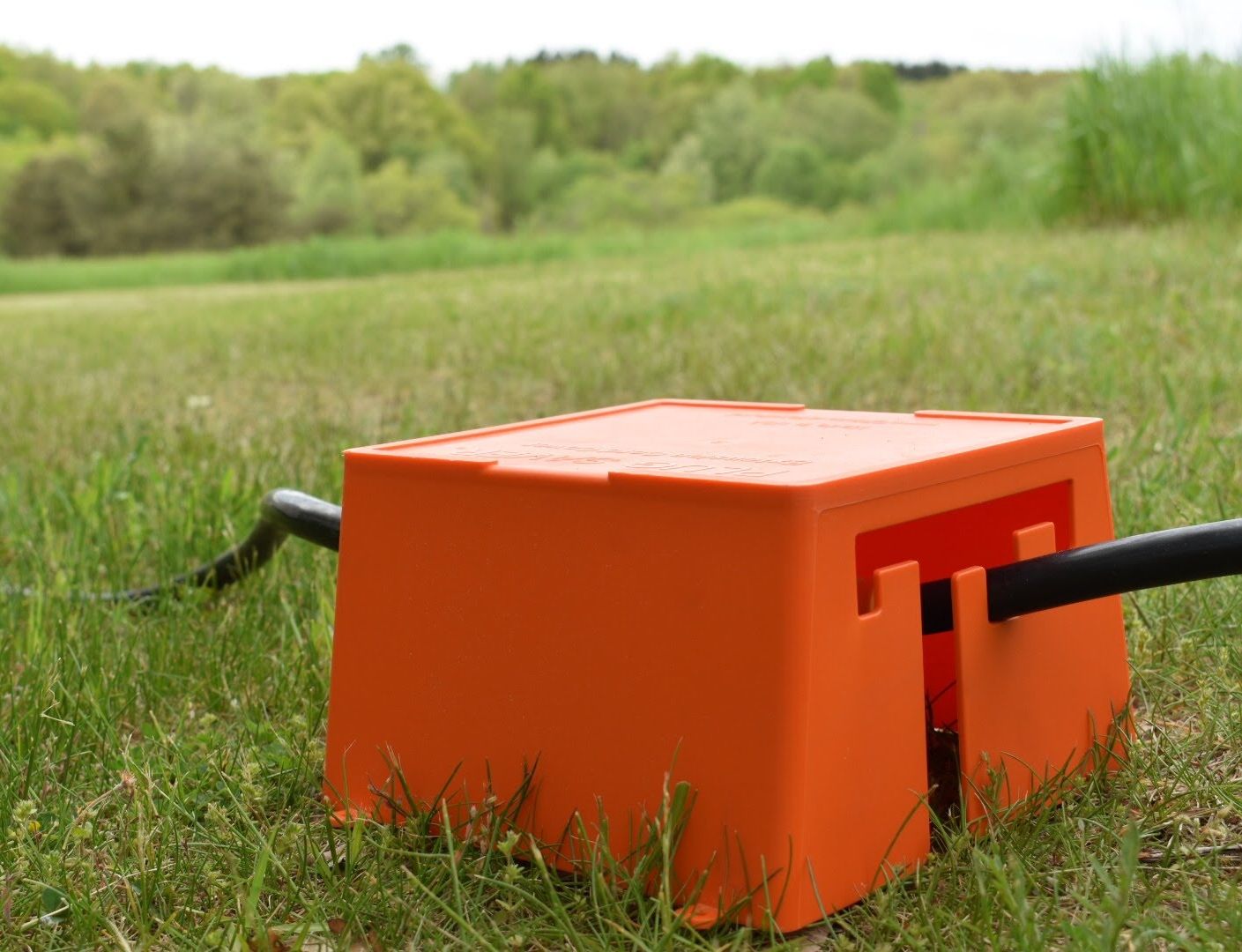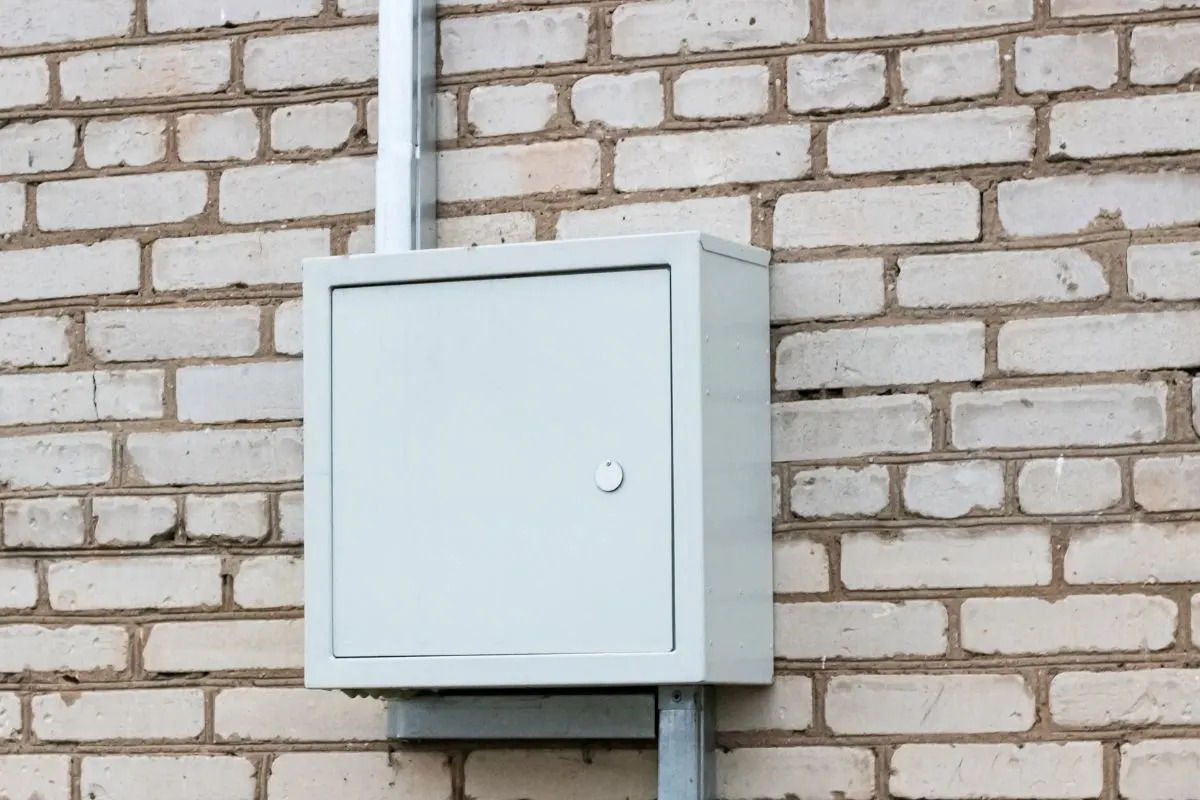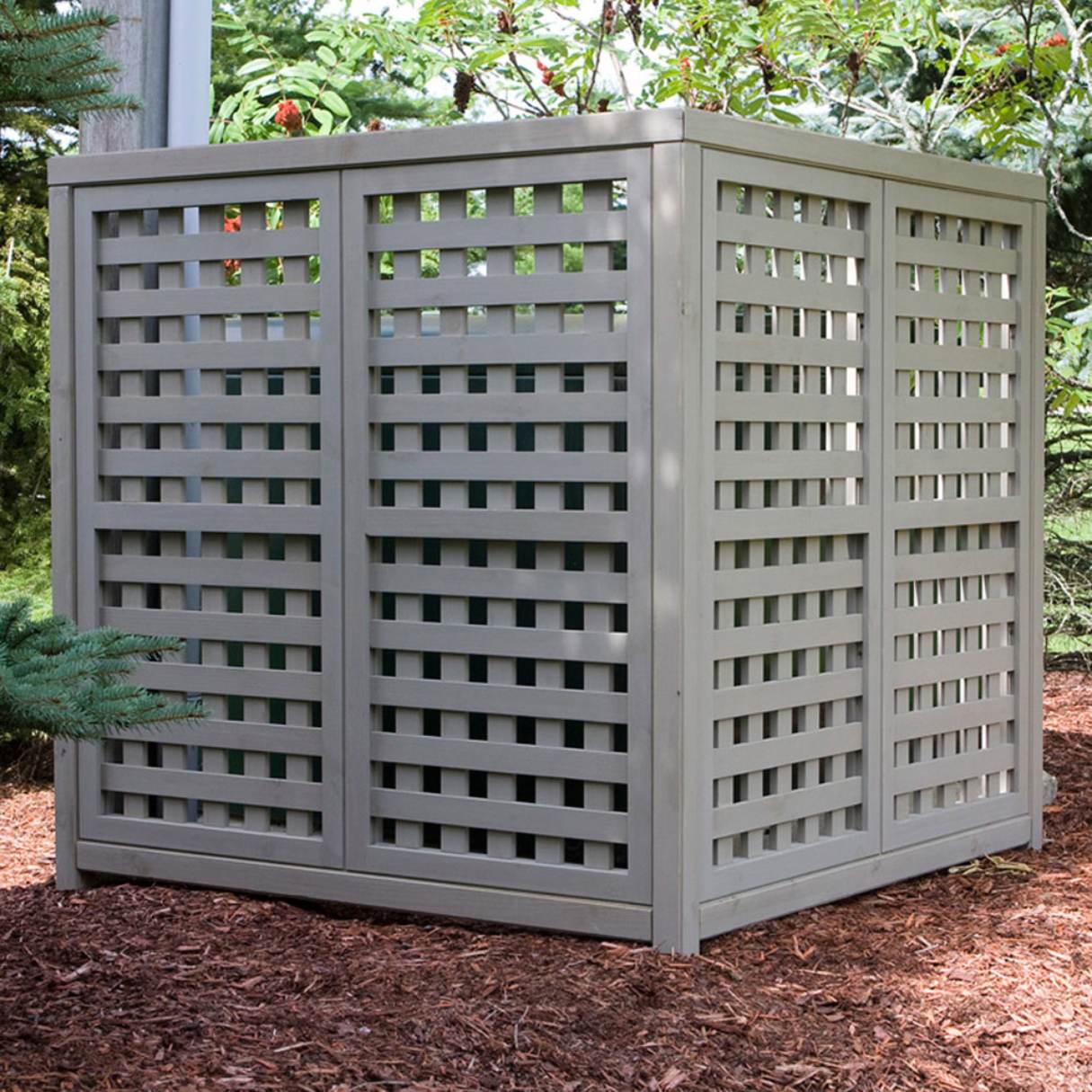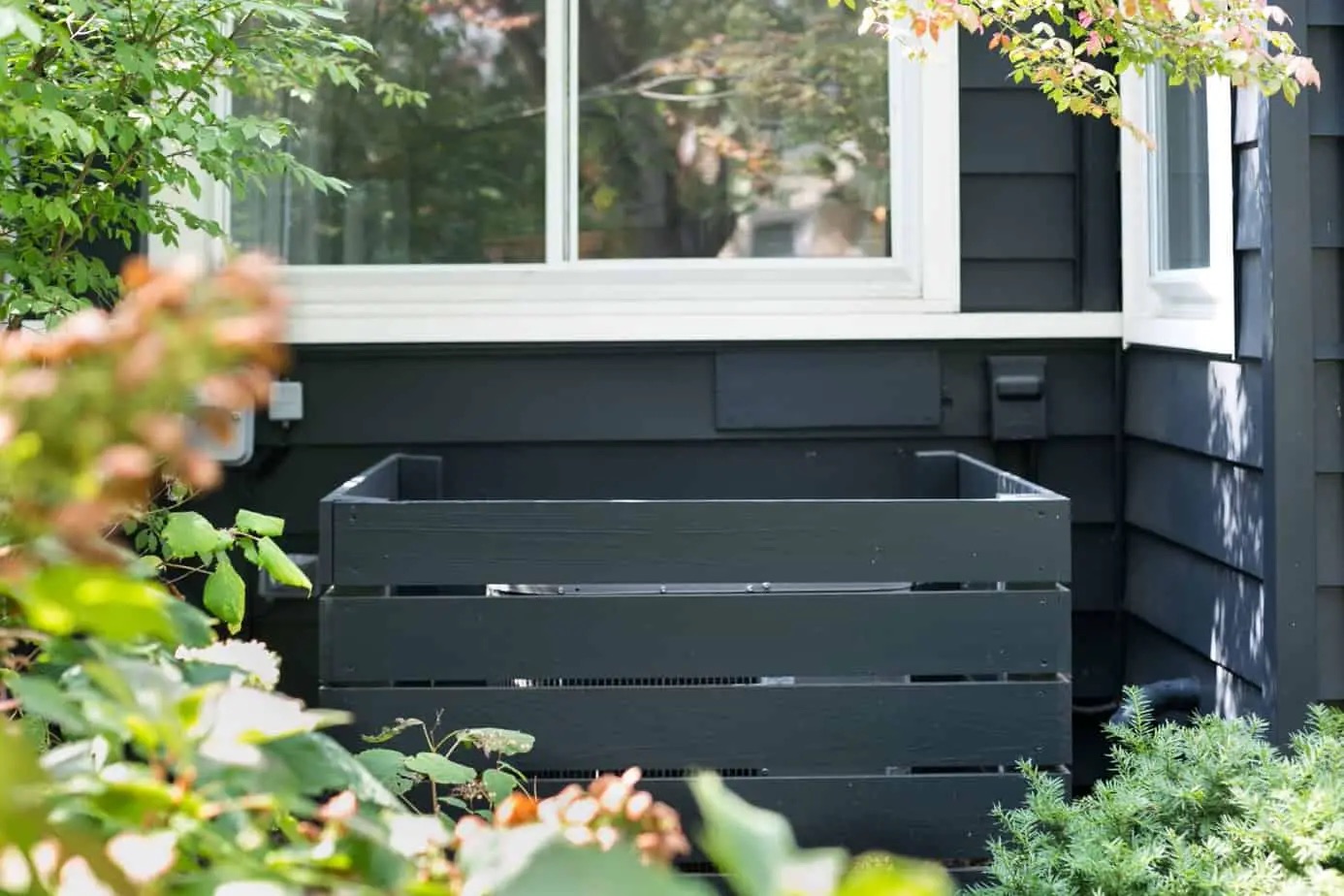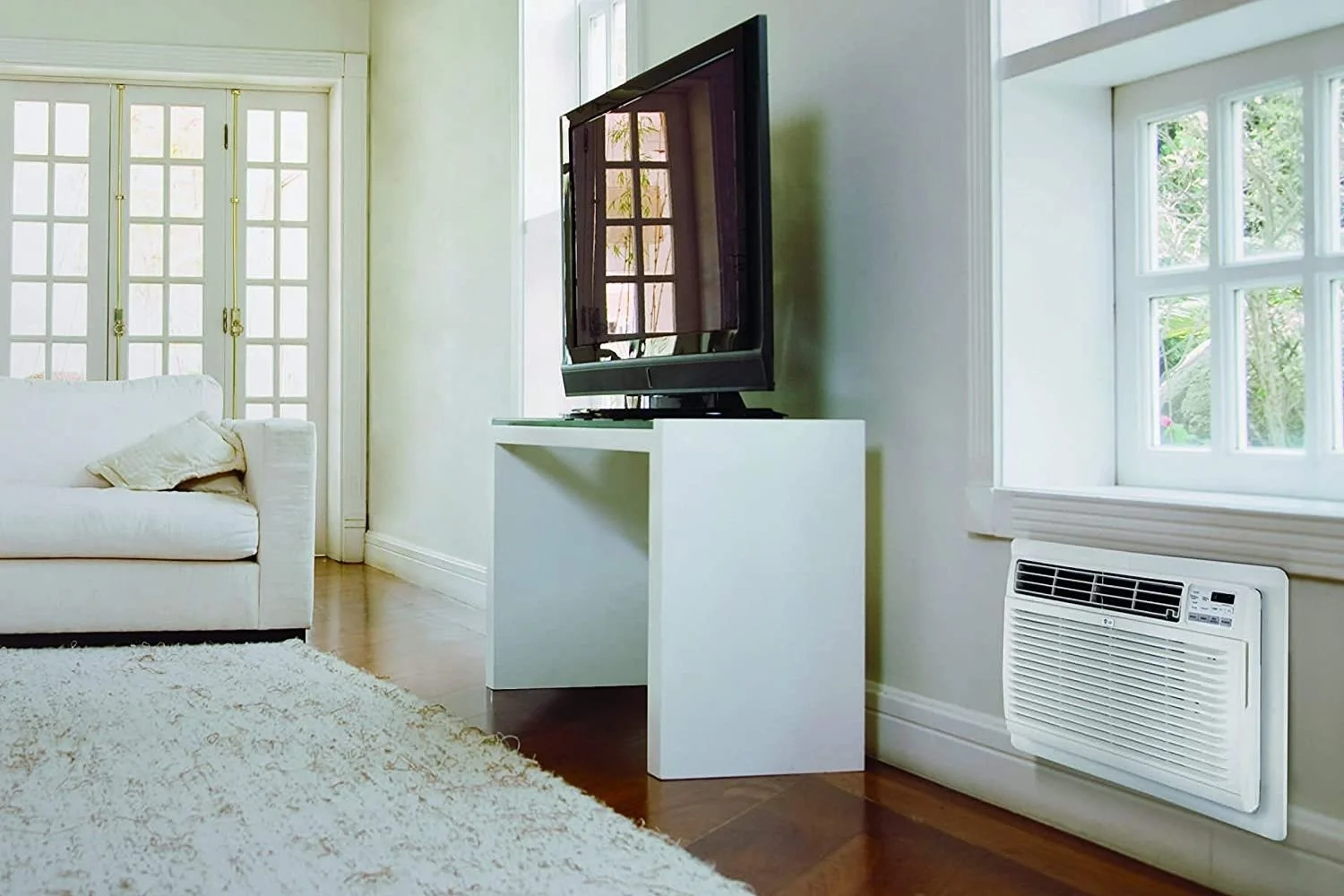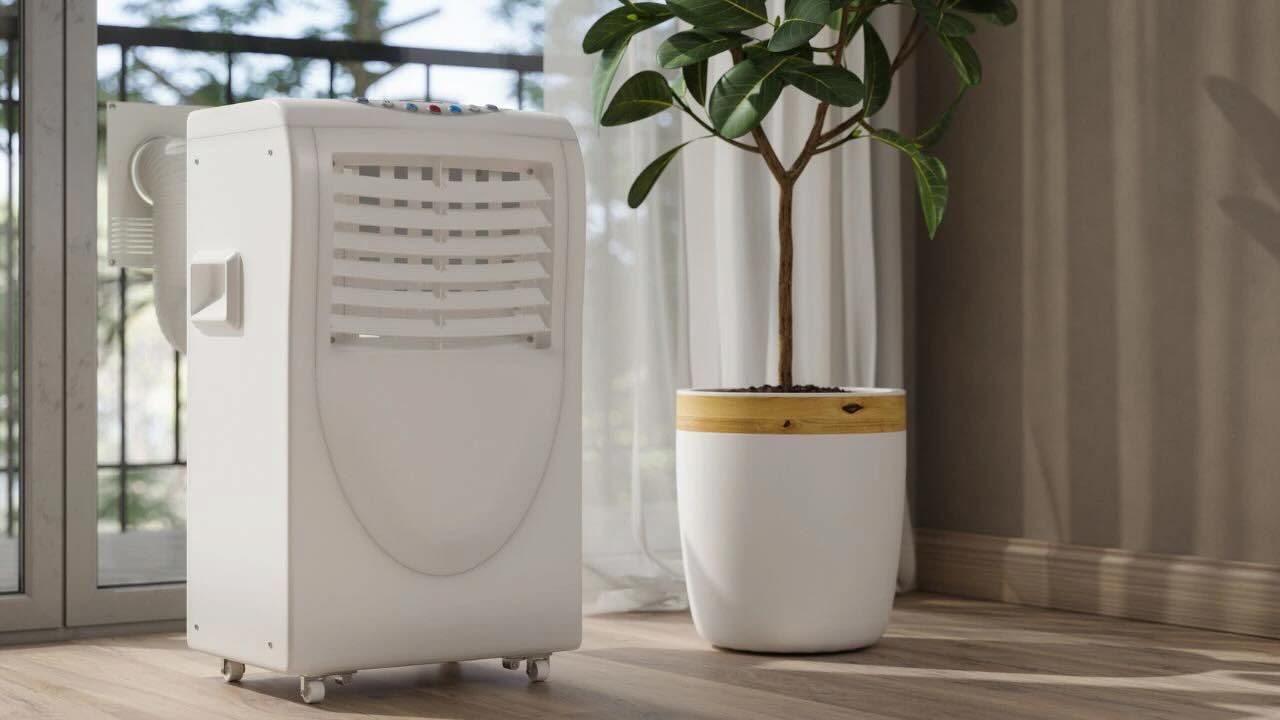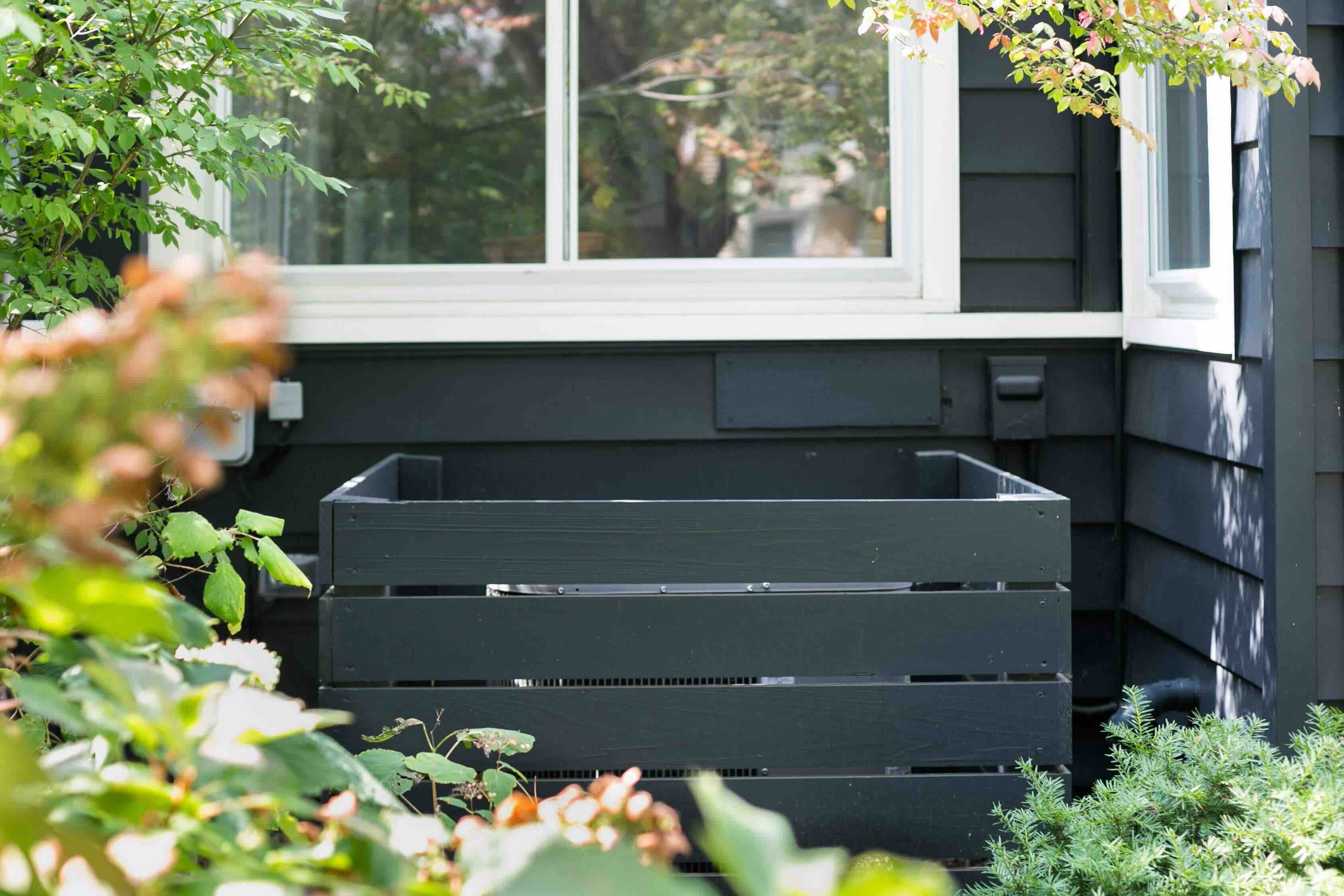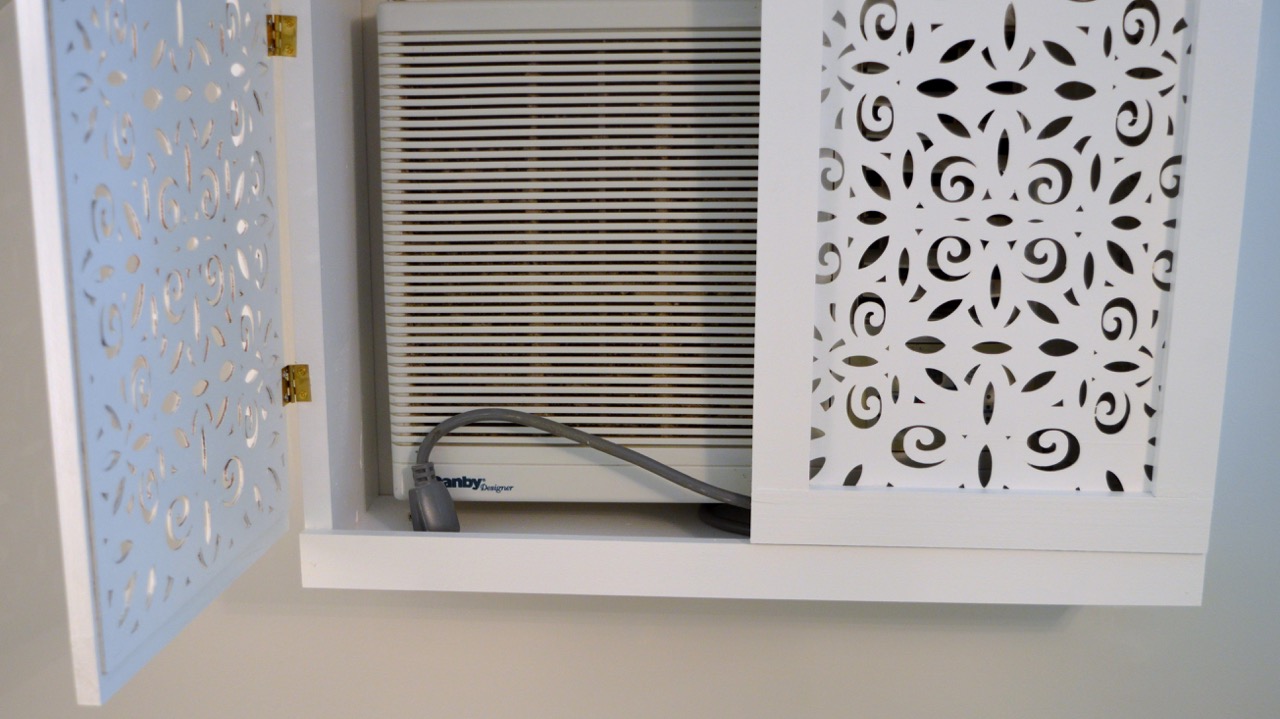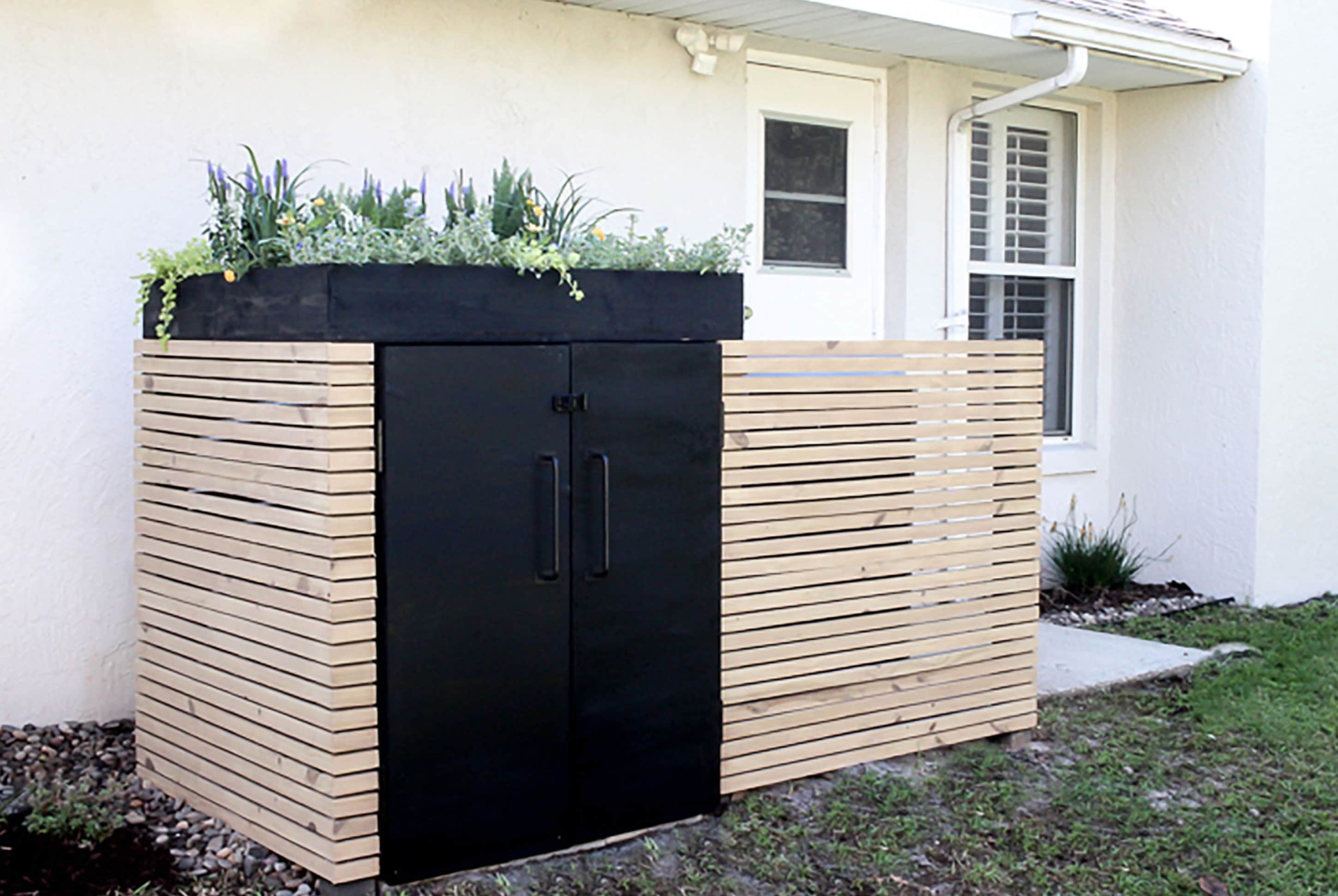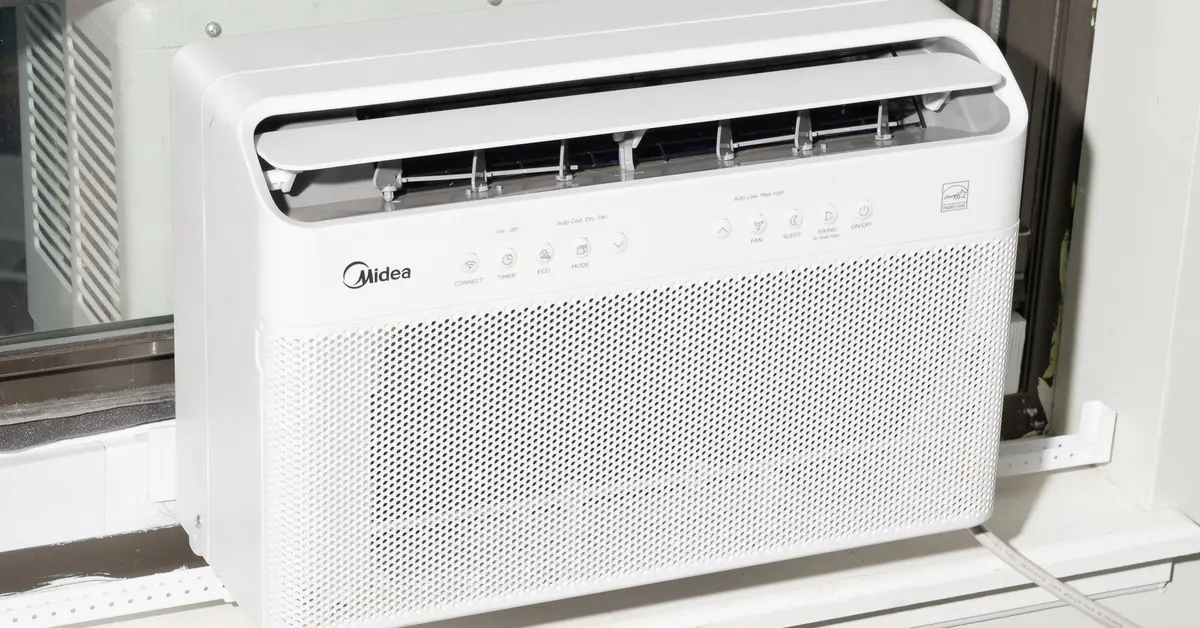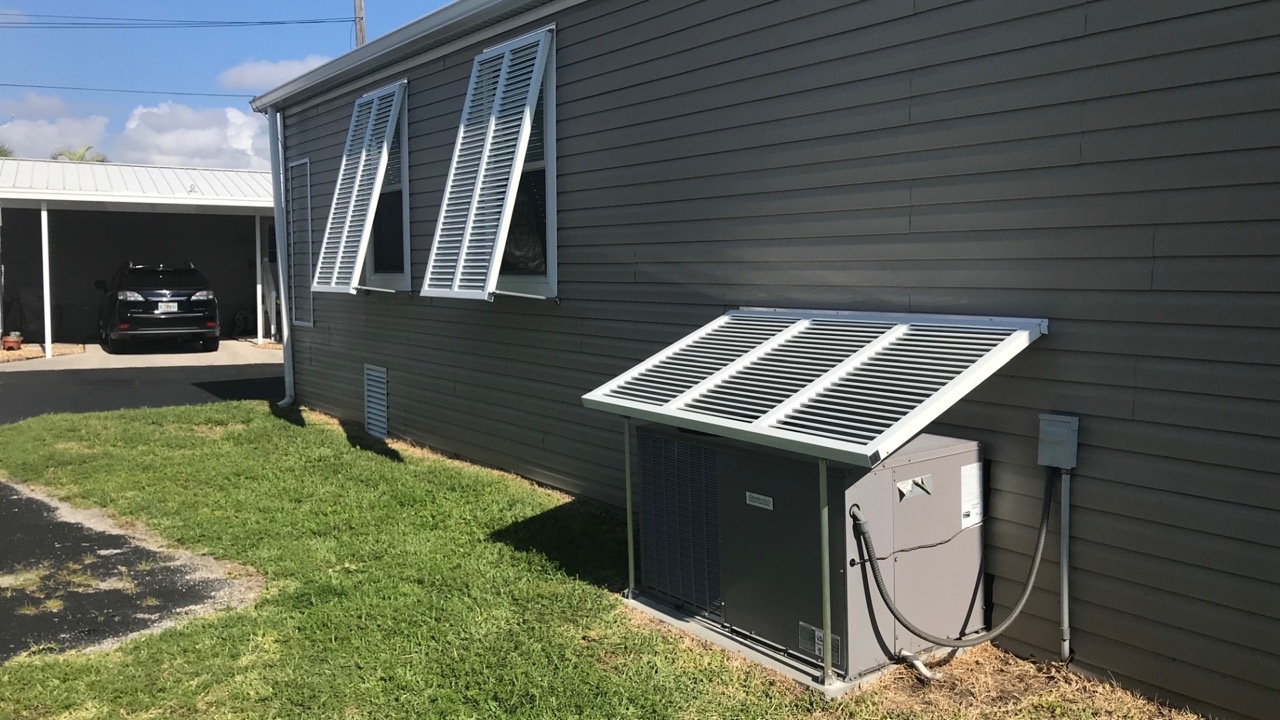Home>Home Maintenance>How To Hide An Air Conditioner Wall Unit Outside
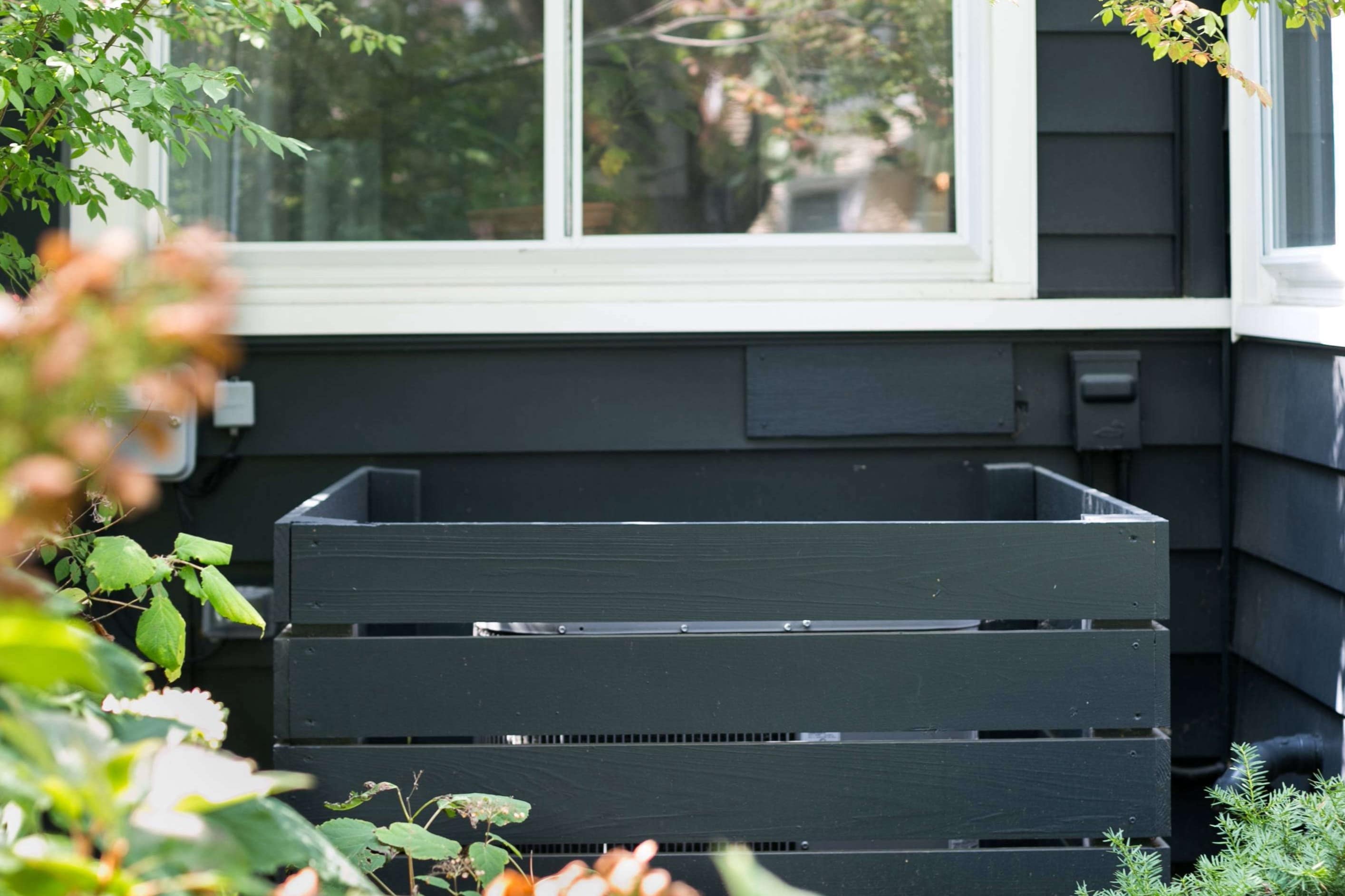

Home Maintenance
How To Hide An Air Conditioner Wall Unit Outside
Modified: March 7, 2024
Learn how to hide an air conditioner wall unit outside with these home maintenance tips. Keep your outdoor space looking stylish and functional while maintaining the efficiency of your AC unit.
(Many of the links in this article redirect to a specific reviewed product. Your purchase of these products through affiliate links helps to generate commission for Storables.com, at no extra cost. Learn more)
Introduction
Welcome to our comprehensive guide on how to hide an air conditioner wall unit outside. If you’re a homeowner who wants to maintain a clean and aesthetically pleasing outdoor space, finding a way to conceal your air conditioner unit is essential. Not only can it improve the appearance of your property, but it can also protect your unit from harsh weather conditions and potential damage. In this article, we will explore various methods and creative ideas to effectively hide an air conditioner wall unit, allowing you to enjoy a beautiful outdoor space without any eyesores.
When it comes to outdoor home maintenance, the air conditioner unit can often be overlooked. While it serves a crucial purpose in keeping your home cool and comfortable, let’s face it, these units aren’t the most attractive feature to look at. They can disrupt the overall aesthetic of your outdoor space and become an eyesore. However, with a little creativity and effort, you can easily hide your air conditioner wall unit and seamlessly blend it into your outdoor decor.
Before we dive into the various methods of concealment, it’s important to consider a few factors. First, check the regulations and guidelines of your local municipality to ensure you’re in compliance with any restrictions on obscuring air conditioner units. Next, examine the location of your unit and take note of any clearance requirements. Adequate airflow is essential to ensure proper functioning and longevity of your air conditioner unit, so be sure not to obstruct the necessary ventilation.
Now that we have these considerations in mind, let’s explore the different methods you can use to effectively hide your air conditioner wall unit outside. From landscaping to customized enclosures and decorative panels, we’ll provide you with a variety of options to choose from based on your preferences and budget.
Key Takeaways:
- 1. Hide your air conditioner unit with landscaping, creating a natural and beautiful disguise that blends seamlessly into your outdoor space. Choose plants that provide coverage and enhance your landscape design.
- 2. Consider building a customized fence or enclosure to conceal your air conditioner, adding privacy and style to your outdoor area. Ensure proper ventilation and maintenance for a functional and attractive solution.
Importance of Hiding an Air Conditioner Wall Unit
While air conditioner wall units are essential for maintaining a comfortable environment indoors, their bulky and industrial appearance can detract from the overall aesthetics of your outdoor space. This is why hiding your air conditioner wall unit is not just a matter of personal preference, but also an important aspect of maintaining a visually appealing exterior.
One of the main reasons to hide an air conditioner wall unit is to improve the curb appeal of your home. When potential buyers or guests approach your property, the first impression they get is critical. A visible air conditioner can create a negative impression and make your outdoor space look cluttered and unattractive. By concealing the unit, you can create a more polished and inviting facade for your home.
Another crucial reason to hide your air conditioner wall unit is to protect it from the elements. Exposing your unit to harsh weather conditions such as rain, snow, and direct sunlight can lead to premature wear and tear. By providing a barrier around it, you can shield the unit from these elements and extend its lifespan.
Concealing your air conditioner can also increase its efficiency. When the unit is exposed to direct sunlight, it has to work harder to cool down the air. By hiding it behind a fence, enclosure, or louver system, you can prevent excessive heat absorption and reduce the strain on the unit. This can help lower your energy consumption and save you money on your utility bills.
Furthermore, hiding your air conditioner wall unit can improve the overall functionality of your outdoor space. Rather than having an eyesore drawing attention, you can create a more harmonious and cohesive design that seamlessly integrates the unit into the landscaping or architectural features. This promotes a sense of tranquility and allows you to fully enjoy your outdoor environment.
Last but not least, hiding your air conditioner wall unit can also provide a security advantage. Units that are visible from the street or neighboring properties can be appealing targets for theft or vandalism. By concealing the unit, you make it less of a temptation and reduce the risk of it being tampered with.
Overall, hiding an air conditioner wall unit is an important aspect of maintaining a visually pleasing and functional outdoor space. It can improve curb appeal, protect the unit from the elements, increase efficiency, enhance the overall design, and provide added security. With the variety of methods available, you can choose an option that suits your tastes and budget, allowing you to fully enjoy your outdoor space without any eyesores.
Factors to Consider Before Hiding an Air Conditioner Wall Unit
Before you proceed with hiding your air conditioner wall unit, it’s important to consider a few factors to ensure a successful concealment that doesn’t compromise the unit’s functionality. By taking these factors into account, you can make an informed decision and choose the most suitable method of hiding for your specific situation.
1. Regulations and Guidelines: Check with your local municipality or homeowner’s association to ensure that there are no restrictions or guidelines regarding the concealment of air conditioner units. Some areas may have specific rules or permits that need to be followed, so it’s essential to be aware of any regulations before proceeding.
2. Clearance Requirements: Air conditioner units require proper airflow for optimal performance. Before concealing the unit, make sure to check the manufacturer’s guidelines or consult with a professional to determine the necessary clearance needed for ventilation. Ensure that your chosen method of concealment does not obstruct the airflow and allows the unit to operate effectively.
3. Access: While the goal is to hide the air conditioner unit, it’s important to consider the accessibility for maintenance and repairs. Make sure that your chosen hiding method allows easy access to the unit whenever it needs servicing or cleaning. Consider incorporating hinged panels or removable enclosures to ensure convenient access whenever required.
4. Weather Resistance: The materials and construction used to hide the air conditioner unit should be able to withstand various weather conditions. Ensure that the chosen materials are durable, water-resistant, and can withstand exposure to sunlight and extreme temperatures. This will help to maintain the longevity of the concealment and protect the unit from the elements.
5. Design and Aesthetics: Consider the overall design and aesthetics of your outdoor space when selecting a method of hiding. Choose a method that complements the existing landscaping or architectural features of your home. Pay attention to the colors, textures, and materials used to ensure a cohesive and visually pleasing result.
6. Budget: Determine your budget before deciding on a method of hiding. Some options, such as landscaping or customized enclosures, may require a higher investment compared to others. Consider your budget constraints and explore different cost-effective options that still achieve the desired result.
By taking these factors into consideration, you can ensure that the concealment of your air conditioner wall unit is successful and meets both functional and aesthetic requirements. Remember to consult professionals if needed and thoroughly plan the hiding method to achieve the best outcome for your outdoor space.
Different Methods to Hide an Air Conditioner Wall Unit
If you’re looking for creative ways to hide your air conditioner wall unit outside, you’re in luck. There are various methods that can effectively conceal the unit while enhancing the overall appearance of your outdoor space. Let’s explore some of the most popular and effective methods below:
1. Landscaping: One of the most natural and visually pleasing ways to hide an air conditioner wall unit is by incorporating it into your landscaping. You can use shrubs, hedges, or tall plants to create a green screen that shields the unit. Choose plants that don’t require extensive trimming and can withstand the heat generated by the unit. Ensure that there is enough space for airflow and easy maintenance access.
2. Customized Fence or Enclosure: Building a customized fence or enclosure around the air conditioner wall unit provides both concealment and added privacy. You can use materials like wood, vinyl, or metal to construct a structure that complements the style of your home. Incorporate a gate or hinged panels for easy access to the unit when necessary. Consider adding decorative elements like lattice or trellis to enhance the aesthetics.
3. Shutter or Louver System: Installing a shutter or louver system can be an excellent way to hide your air conditioner unit while providing ventilation and easy access. Louvers can be adjustable, allowing you to control the airflow and redirect it as needed. Choose materials that are weather-resistant and complement the architectural style of your home. You can even paint them to match the exterior color palette.
4. Decorative Screens or Panels: Concealing your air conditioner wall unit with decorative screens or panels is a stylish and versatile option. These panels can be made from various materials like bamboo, metal, or PVC and come in a range of designs and patterns. Choose a panel that suits your aesthetic preferences and attach it directly to the wall or construct a freestanding structure around the unit. This method not only hides the unit but also adds a decorative element to your outdoor space.
5. Vertical Garden: Creating a vertical garden around your air conditioner wall unit is an innovative and eco-friendly approach to concealment. Install a trellis or specialized vertical gardening system and choose plants that can thrive in a limited space. Opt for plants that require minimal maintenance and can withstand the heat generated by the unit. This method not only hides the air conditioner but also adds a vibrant and green touch to your outdoor area.
With these methods in mind, you can choose the one that best fits your preferences, budget, and the overall design of your outdoor space. Remember to consider factors such as clearance requirements, access for maintenance, and weather resistance to ensure a successful concealment that doesn’t compromise the functionality of your air conditioner wall unit.
Option 1: Using Landscaping
One of the most natural and visually appealing methods to hide an air conditioner wall unit is by incorporating it into your landscaping. This option allows you to seamlessly blend the unit into the surrounding environment while maintaining a beautiful outdoor space. Here’s how you can use landscaping to effectively conceal your air conditioner:
1. Choose the Right Plants: Start by selecting the appropriate plants that will serve as a screen for the air conditioner. Look for shrubs, hedges, or tall plants that have dense foliage and can provide adequate coverage. It’s important to choose plants that are suitable for your climate and can withstand the heat generated by the unit. Consider evergreen plants for year-round coverage or flowering plants for additional beauty.
2. Plan the Layout: Take measurements of the area around the air conditioner unit and plan the layout of your landscaping. Consider the clearance requirements for the unit and ensure that there is enough space for proper airflow. You may need to create a small designated area for the unit to ensure it remains accessible for maintenance and repairs.
3. Create a Green Screen: Plant the chosen shrubs or tall plants strategically to create a green screen around the air conditioner. Place them in a way that provides good coverage while maintaining a clean and structured appearance. Remember to give each plant enough space to grow and spread out naturally. This will not only hide the unit but also add depth and dimension to your outdoor space.
4. Add Mulch or Ground Cover: To enhance the overall aesthetics and functionality of the landscaping, consider adding a layer of mulch or ground cover around the air conditioner unit. This will help suppress weed growth, retain moisture, and give a neat and polished look to the area. Choose a material that matches the rest of your garden and complements the color scheme.
5. Consider Decorative Features: To further enhance the visual appeal of your landscaping, consider incorporating decorative features around the air conditioner unit. You can add decorative stones, stepping stones, or small garden statues to create interest and add a personal touch to the area. However, be mindful not to obstruct the unit or hinder its accessibility.
6. Regular Maintenance: Proper maintenance is crucial to keep your landscaping looking its best. Trim the plants regularly to maintain their shape and prevent them from obstructing the air conditioner unit. Remove any debris or fallen leaves that may gather around the area. Be sure to water the plants adequately to ensure their health and vitality.
Using landscaping to hide an air conditioner wall unit is an effective and organic way to integrate the unit into your outdoor space. It not only conceals the unit but also adds beauty and depth to your landscape design. By carefully selecting the right plants, planning the layout, and maintaining the landscaping regularly, you can create a natural and visually appealing disguise for your air conditioner unit.
Consider using a lattice or trellis to hide the air conditioner unit outside. You can also plant tall bushes or shrubs around it for natural coverage. Just make sure to leave enough space for proper airflow.
Read more: How To Hide A Wall Air Conditioner
Option 2: Building a Customized Fence or Enclosure
If you’re looking for a more structured and private way to hide your air conditioner wall unit, building a customized fence or enclosure is an excellent option. This method not only effectively conceals the unit but also adds a touch of privacy and style to your outdoor space. Here’s how you can create a customized fence or enclosure to hide your air conditioner:
1. Determine the Design: Start by deciding on the design of your fence or enclosure. Consider the architectural style of your home and choose a design that complements it. You can opt for a fence that matches the existing fencing on your property, or you can go for a more elaborate enclosure that adds an aesthetic element to your outdoor space. Take accurate measurements to ensure that the enclosure will fit perfectly around the air conditioner unit.
2. Select Suitable Materials: Choose appropriate materials for your fence or enclosure based on durability, maintenance, and aesthetics. Popular options include wood, vinyl, metal, or a combination of materials. Each material has its own advantages, so consider factors such as weather resistance, ease of construction, and compatibility with your specific design preferences. Make sure to use treated wood or rust-resistant materials to ensure longevity.
3. Build the Structure: Construct the fence or enclosure according to your design and measurements. Start by installing sturdy posts at regular intervals to provide stability for the structure. Attach the chosen materials to the posts, ensuring a secure and snug fit. If you’re building an enclosure, consider adding a hinged door or panels that can be easily opened for maintenance and repairs.
4. Enhance with Decorative Elements: To add visual interest and style, consider incorporating decorative elements into your fence or enclosure. You can add lattice panels to provide airflow while adding a decorative touch. Alternatively, consider using decorative metalwork or ornamental accessories to enhance the design. Paint or stain the fence or enclosure in a color that complements your outdoor aesthetic.
5. Provide Ventilation: While the primary purpose of the fence or enclosure is to hide the air conditioner unit, it’s crucial to ensure proper ventilation. Incorporate ventilation slots or spaced boards into the design to allow adequate airflow around the unit. This will prevent the unit from overheating and ensure optimal performance.
6. Maintain Regularly: Regular maintenance is essential to keep your customized fence or enclosure in good condition. Inspect the structure periodically for any signs of damage, such as rot or rust, and repair or replace as needed. Clean the material surfaces regularly to remove dirt and debris that may accumulate over time.
Building a customized fence or enclosure provides a structured and visually appealing solution to hide your air conditioner wall unit. By carefully designing and constructing the structure, incorporating decorative elements, and ensuring proper ventilation, you can create a functional and attractive enclosure that seamlessly integrates with your outdoor space.
Option 3: Installing a Shutter or Louver System
If you’re looking for a versatile and functional way to hide your air conditioner wall unit, installing a shutter or louver system is an excellent option. This method not only effectively conceals the unit but also provides ventilation and allows for easy access when necessary. Here’s how you can install a shutter or louver system to hide your air conditioner:
1. Assess the Site: Start by assessing the space around your air conditioner wall unit to determine suitable placement for the shutter or louver system. Consider the clearance requirements for the unit and ensure that the system will fit without obstructing the necessary airflow. Take accurate measurements to determine the size and dimensions of the system needed.
2. Select the Type of System: There are various types of shutter or louver systems available, including fixed louvers, adjustable louvers, and shutters that can be opened or closed. Choose the type of system that best suits your needs and preferences. Adjustable louvers provide the benefit of controlling the airflow and directing it away from sensitive areas or towards desired locations.
3. Choose Suitable Materials: Select high-quality materials for your shutter or louver system that are durable and capable of withstanding outdoor conditions. Materials such as wood, aluminum, or vinyl are commonly used for their weather resistance and long-lasting properties. Consider the style of your home and the overall aesthetic you want to achieve when choosing the material for the system.
4. Install the System: Follow the manufacturer’s instructions to install the shutter or louver system. This typically involves attaching the frame securely to the wall around the air conditioner unit and mounting the shutter or louver panels onto the frame. Make sure to double-check the accuracy of your measurements to ensure a proper fit.
5. Finishing Touches: Once the shutter or louver system is installed, consider adding finishing touches to enhance its appearance and functionality. You may choose to paint or stain the system to match your outdoor aesthetic and protect it from the elements. Additionally, consider adding weather-resistant seals or gaskets to ensure a tight fit and minimize air leakage.
6. Maintenance and Operation: Regular maintenance of the shutter or louver system is important to keep it functioning properly. Inspect the system periodically for any signs of damage or wear and replace any broken or missing components. Clean the system regularly to remove dust and debris that can accumulate over time and obstruct the airflow.
Installing a shutter or louver system provides an effective way to hide your air conditioner wall unit while maintaining proper ventilation and accessibility. By selecting the appropriate system, using durable materials, and performing regular maintenance, you can achieve a functional and aesthetically pleasing solution for concealing your air conditioner.
Option 4: Concealing with Decorative Screens or Panels
If you’re looking for a stylish and versatile method to hide your air conditioner wall unit, concealing it with decorative screens or panels is a great option. This method allows you to add a decorative element to your outdoor space while effectively hiding the unit. Here’s how you can use decorative screens or panels to conceal your air conditioner:
1. Choose the Right Screens or Panels: Start by selecting the appropriate decorative screens or panels that will effectively hide the air conditioner unit. Options include bamboo screens, metal trellis, laser-cut screens, or decorative PVC panels. Consider the design and style that best complements your outdoor space and choose materials that are weather-resistant and durable.
2. Measure the Area: Take precise measurements of the area around the air conditioner unit to ensure the screens or panels fit perfectly. Consider the clearance requirements for the unit and allow enough space for proper ventilation. Take into account any necessary access points for maintenance and repairs.
3. Install the Screens or Panels: Install the decorative screens or panels around the air conditioner unit according to the manufacturer’s instructions. This may involve attaching them to existing structures or creating a freestanding enclosure. Ensure that the screens or panels are securely mounted to withstand outdoor conditions.
4. Enhance with Greenery: To further enhance the camouflage effect and add a touch of nature, consider incorporating greenery into the display. Install planters or hanging baskets near the screens or panels and choose plants that complement your outdoor space and can withstand the heat generated by the unit. This will help create a seamless blend between the decorative element and the surrounding environment.
5. Add Lighting: To showcase the decorative screens or panels and create an ambient atmosphere, consider adding lighting. Install solar-powered lights along the edges of the screens or panels or place ground lights strategically to highlight the area. This will not only enhance the aesthetics of the display but also provide visibility during the evening hours.
6. Maintain Regularly: Regular maintenance is essential to keep the decorative screens or panels in good condition. Inspect them periodically for any signs of damage or wear and repair or replace any broken pieces. Clean the screens or panels regularly to remove dirt and debris that may accumulate, ensuring they retain their beauty and functionality.
Concealing your air conditioner wall unit with decorative screens or panels adds a touch of elegance and style to your outdoor space while effectively hiding the unit. By choosing the right screens or panels, measuring accurately, installing securely, incorporating greenery, adding lighting, and performing regular maintenance, you can achieve a visually appealing and functional solution for concealing your air conditioner.
Option 5: Creating a Vertical Garden
If you’re looking for a creative and eco-friendly way to hide your air conditioner wall unit, creating a vertical garden is a fantastic option. This method not only effectively conceals the unit but also adds a vibrant and natural touch to your outdoor space. Here’s how you can create a vertical garden to hide your air conditioner:
1. Assess the Space: Start by assessing the space around your air conditioner wall unit to determine the best area for creating a vertical garden. Consider the amount of sunlight the area receives and the clearance requirements for the unit. Ensure that there is enough space for the plants to grow and flourish without obstructing the necessary airflow.
2. Choose Suitable Plants: Select plants that are suitable for vertical gardening and can thrive in the space and conditions available. Opt for low-maintenance and drought-tolerant plants to minimize the need for constant watering and upkeep. Consider the size and growth habits of the plants, ensuring they won’t overshadow or obstruct the air conditioner unit.
3. Install a Trellis or Vertical Gardening System: Install a trellis or specialized vertical gardening system against the wall where the air conditioner unit is located. The trellis should be sturdy enough to support the weight of the plants while providing a framework for them to grow vertically. Alternatively, you can use a modular vertical gardening system that allows for easy installation and customization.
4. Plant and Care for the Garden: Plant the selected plants in the vertical garden system, ensuring that they are adequately spaced and have enough room to grow. Provide them with the appropriate soil, nutrients, and water as needed. Regularly monitor the garden for any signs of pests or diseases and take appropriate measures to address them. Trim and prune the plants regularly to maintain their shape and prevent them from becoming overgrown.
5. Incorporate a Drip Irrigation System: To ensure that the plants receive adequate water without wastage, consider installing a drip irrigation system for your vertical garden. This system allows water to be directly delivered to the plant roots, minimizing water loss through evaporation. It also reduces the frequency of manual watering, making it more convenient to maintain the garden.
6. Maintain Regularly: Regular maintenance is crucial to keep your vertical garden healthy and thriving. This includes watering the plants as needed, removing any dead or diseased foliage, and fertilizing them periodically. Inspect the trellis or vertical gardening system for any signs of damage and repair or replace any broken parts promptly.
Creating a vertical garden provides a natural and visually captivating way to hide your air conditioner wall unit. By carefully selecting suitable plants, installing a trellis or vertical gardening system, providing proper care and maintenance, you can transform the area around your unit into a beautiful and functional vertical oasis.
Conclusion
Hiding an air conditioner wall unit outside is not only a practical solution but also an opportunity to enhance the overall aesthetic of your outdoor space. By effectively concealing the unit, you can create a clean and visually appealing environment that allows you to fully enjoy your outdoor surroundings. Throughout this article, we have explored various methods to hide an air conditioner wall unit, including using landscaping, building a customized fence or enclosure, installing a shutter or louver system, concealing with decorative screens or panels, and creating a vertical garden.
Landscaping offers a natural and seamless way to hide the unit, integrating it into the greenery of your outdoor environment. It allows you to choose plants that not only provide coverage but also enhance the overall beauty of your landscape design.
Building a customized fence or enclosure provides a more structured and private option. It not only effectively conceals the unit but also adds a touch of style and can match the existing fencing or architectural features of your home.
Installing a shutter or louver system combines functionality with aesthetics. These systems not only hide the unit but also offer ventilation and control over airflow, allowing you to maintain optimal performance and energy efficiency.
Concealing the unit with decorative screens or panels adds a decorative element to your outdoor space while effectively hiding the unit. These screens or panels come in various materials and designs, allowing you to choose one that complements your outdoor aesthetic.
Creating a vertical garden is a unique and eco-friendly option. It not only conceals the unit but also adds a vibrant and natural touch to your outdoor area, transforming the surrounding space into a lush and enchanting vertical oasis.
Before undertaking any method to hide your air conditioner wall unit, it’s important to consider factors such as local regulations, clearance requirements, access for maintenance, weather resistance, and your budget. By taking these factors into account, you can ensure a successful concealment that doesn’t compromise the functionality of your unit.
In conclusion, hiding an air conditioner wall unit outside is a worthwhile endeavor to maintain a visually pleasing outdoor space. Whether you choose landscaping, fences, shutters, panels, or vertical gardens, the end goal is to effectively conceal the unit while achieving an attractive and harmonious outdoor environment. Explore the various options, get creative, and enjoy the benefits of a hidden and beautifully maintained air conditioner wall unit.
Frequently Asked Questions about How To Hide An Air Conditioner Wall Unit Outside
Was this page helpful?
At Storables.com, we guarantee accurate and reliable information. Our content, validated by Expert Board Contributors, is crafted following stringent Editorial Policies. We're committed to providing you with well-researched, expert-backed insights for all your informational needs.
